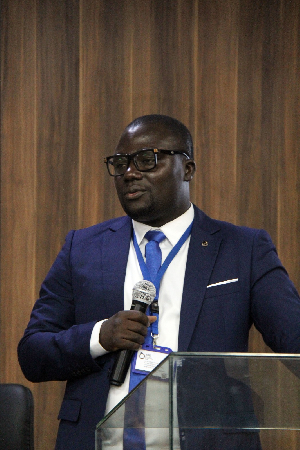Accra, May 18, GNA - Professor Ernest Aryeetey, Director of the Institute of Statistical, Social and Economic Research (ISSER) on Wednesday said Ghana's economy risked stagnation if its economic structures that had remained the same since 1911 were not changed. "The structure of Ghana's economy has been the same since 1911.
This cannot lead to sustainable growth and must change. We have no choice but to restructure the economy because no country has been able to develop without structural adjustment," he said at the Ninth Annual Lecture of the Public Service Commission (PSC) in Accra.
The annual lecture is a public service platform where topical and strategic issues, bearing on national development generally and the public service in particular, could be freely and frankly discussed and debated.
This year's lecture was under the theme: "Planning for Socio-Economic Development in Ghana". It was sponsored by Friedrich Ebert Foundation.
Since the 1919 Guggisberg Plan, Ghana has evolved several development plans and strategies including the 1983 Economic Recovery and Structural Adjustment Programme, the 1995 Ghana Vision 2020, the 2003 Ghana Poverty Reduction Strategy (GPRS I) and the recent 2006 Growth and Poverty Reduction Strategy (GPRS II).
Speaking on the topic "Can Ghana Achieve Structural Transformation Without a Development Plan," Prof. Aryeetey said even though Ghana's economy underwent significant structural shifts during 1891 to 1911, following the introduction of cocoa, gold mining and the associated development of the railway, structural change lost its momentum during that period, with the recent structure bearing close affinity to the 1911 Gold Coast.
He said although Ghana had mostly grown at an average of just under five per cent for two decades it had not seen any structural change, "which is highly unusual in development history."
This, he said was because the surplus that should have been generated by agriculture to be transferred to other sectors of the economy had been replaced by development assistance.
"But development assistance is not easily predictable and cannot easily be used to generate the necessary employment in the same way that private capital and other direct investments can."
"Our structure is dependent on agriculture, particularly cocoa, but this alone does not create jobs for the unemployed," he said. He said the absence of structural change despite decent economic growth rates was due to the source of growth based on public investment funded aid.
Prof. Aryeetey noted that public investment had failed to rope in private investment in a substantial way, attributing the poor performance of all market factors - land, labour and capital - to major structural bottlenecks that had accounted for the less than impressive performance of private investment.
He said when the markets did not work, the expected net resource transfer could not take place to facilitate structural change. Prof. Aryeetey noted that manufacturing which should be the driving force for the economy in terms of creating jobs was not moving fast, and that the trend should be the concern of economic planners. He noted that since the country's structures, that were linked to agriculture had not changed, the sector should be made a lot more productive to support and sustain the current structure, without disrupting other sectors of the economy.
Prof. Aryeetey said most of the difficulty in articulating clear strategies for long-term development since the 1970's was due to the state of flux in development thinking in the international institutions. "But the experiences of the last 23 years suggest that it is possible to stabilize the economy, with appropriate macroeconomic policies and a development plan, "he added.
Prof. Aryeetey said a development plan could provide the coordinated instruments for initiating the removal of the structural constraints that impede functioning of the markets. He pointed out that with good policies, Ghana could stabilize the economy and achieve appreciable growth with proper structural policies, because Ghana had stabilized for far too long and needed to use the stability to move the economy forward.
However, he said a stable economy did not necessarily attract investment.
Prof. Aryeetey suggested that in designing and implementing an appropriate development plan, it was important to have a clear vision that reflected the path to structural transformation as the goal. "Poverty reduction and reduced inequality can only be sustained if there is structural transformation. An appropriate vision must be one that is shared with the people. It must be one that articulates clearly the role that the State will play in relation to the private sector," he said.
Prof. Aryeetey said such a strategy must remove constraints to the effective allocation of resources by markets and called for selective public investment in areas that private sector could grow faster while aiding in structural transformation.
The focus of development plan, he said, should be on four thematic areas; industrial development, modernizing agriculture, human capital for structural transformation and human settlements for a changing economy.
Prof. Aryeetey said since a sound institutional framework was essential for successful planning, the National Development Planning Commission (NDPC) should be adequately equipped for the purpose as well as the planning arms of district assemblies re-equipped and re-oriented for a new approach to planning. Additionally, he said negotiated support programmes with development partners must be informed by the country's development plan and nothing else.
Click to view details



Business News of Thursday, 18 May 2006
Source: GNA
















